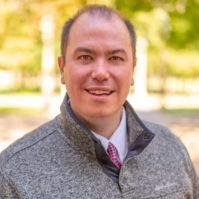Guest blog by Calvin J. Stocker

Shea Culpepper
A number of educational leaders are visionaries, others pacesetters and some servant-oriented in their approach. Shea Culpepper—Clinical Full Professor & Director of Teacher Education at the University of Houston—is all three, and has set out to transform how teacher educators think about, and do, teaching. She is a math teacher educator at heart, though her feverishness ‘to learn’ sets her apart in most facets in which Shea is interested or sees a need. Transforming the University of Houston into one of the most applauded university-based teacher preparation programs in the nation, Shea has turned her attention to sharing with others what she’s learned from years of change management and candidate development. In a recent conversation with Shea, she describes the University of Houston’s shift to practice-based programming and how she’s seen it improve teacher education.
CALVIN: You’ve been working with your colleagues to make the shift to a practice-based program. What inspired you to provide your math candidates with more opportunities to practice?
SHEA: Somewhere midway through my 11 years as a teacher educator, I was having a casual conversation with an evaluator who was there to review the program. She asked me, “How do you know your teacher candidates can teach?” I responded by talking about the assignments my candidates completed, feeling confident in that moment that I had done well in preparing my candidates to understand math teaching. The evaluator pushed back on me. She helped me realize that while I could name assignments that demonstrated my candidate’s understanding of teaching, I didn’t actually know if they could enact those teaching strategies. They could talk about curriculum issues and assessing students. I even knew they could write high quality lessons. What I didn’t know was whether they could really implement those lessons or if they knew anything about their students. In reflecting on that, I finally had to say: “I don’t know if they can teach.”
But that really is what we want to know: When they graduate, can our candidates go in front of students and teach? So, we started shifting our thinking about what we ask our candidates to do for us. What we really want to know isn’t whether they can write lessons ahead of time but instead how well they can teach those lessons.
Truthfully, I first came at it with an academic defensiveness. Then, through our partnership with US PREP, we began utilizing TeachingWorks’ high leverage practices and the Teacher Education by Design (TEDD) framework. We started building our classes around that framework. We shifted from a lot of written assignments that told us what our students knew to a few practice-based assignments that told us what our students could do.
“While I could name assignments that demonstrated my candidate’s understanding of teaching, I didn’t actually know if they could enact those teaching strategies.”
CALVIN: It sounds like practice-based opportunities could be challenging to implement in a virtual environment. How have you shifted this work in response to COVID-19?
SHEA: Like many educators around the country, my first reaction was, “Wow. It’s all over.” We made such great progress but I started thinking that if we go remote, we’d have to go back to teaching candidates about teaching instead of teaching candidates how to teach.
I’m really lucky to have a colleague, Justin Burris, who has more expertise in remote learning. We’re working together to move this practice-based teaching to a remote setting. That’s really important because that’s where our teachers are: they’re remote. That’s also where their students are, as they’re also remote. Teaching doesn’t end because we’re remote.
Does what we know about teaching change just because we’re in a remote setting? I think that if something is true about teaching, then it should still be true even if you’re teaching remotely. Instead of thinking about how to do the exact same things we did in the classroom while in a remote setting, we should be thinking about the critical teaching practices and how to maintain them in an online environment. We still need to engage students and build relationships but now we do it differently. We’re also thinking of this as an opportunity to model to our teacher candidates what remote teaching should look like.
While I remain hopeful that we’ll go back to in-person teaching, I also don’t believe this will be the last time that we’re in a situation like this. In Houston, for example, we have hurricanes. I imagine that during a hurricane in a post-COVID world, instead of shutting down, we’ll say, “No, we know how to do this online.” This creates fewer walls and less constraints on where we teach.
“Does what we know about teaching change just because we’re in a remote setting?”
CALVIN: Your commitment to providing your teacher candidates with practice-based opportunities, regardless of whether your classes are in-person or virtual, is apparent. Why do you think practice-based opportunities for teacher candidates are so important? What impact does it ultimately have?
SHEA: It’s as simple as this: I believe every student deserves a well-prepared teacher in front of them every year, whether in the classroom or on Zoom. At first, I was preparing my teacher candidates to talk about what good teaching looks like. They talked about teaching in the abstract. In hindsight, I don’t know that I was really preparing them to be that teacher. It’s crucial that we prepare teachers who aren’t just good enough at talking to get the job, but are actually good at doing the work of teaching in front of their students on day one. Providing candidates the opportunity to practice the teaching they are learning about helps to ensure that they are truly ready to support their students on day one.
CALVIN: As you think about practice-based opportunities for your candidates, how do you see these opportunities promoting principles of equity, diversity, inclusion and social justice?
SHEA: This is critically important to me. Just because it’s good teaching, doesn’t mean it’s good teaching for all kids. To think that good teaching is good for all children doesn’t attend to structures of inequity or disrupt those structures. When [Ibram X.] Kendi talks about being either racist or anti-racist, I think the same thing applies to teaching. It has to be deliberate and intentional.
I think that practice-based opportunities help with that. There used to be this mantra of meeting kids where they are. That’s true, but that’s not where you stop. You meet them where they are and then get them to rigorous grade-level content. You have to be deliberate and intentional. If you don’t focus on where you want students to be, they won’t get there. Practice-based opportunities give candidates the chance to become deliberate and intentional in their teaching strategies.
For example, if you make eliciting and interpreting student thinking the center, you honor students’ thinking and their experiences as well as the math content. You validate them and make it clear that they are important enough to be heard. Candidates therefore need opportunities to practice eliciting and interpreting student thinking. This is why practice-based opportunities are so important for the teacher candidate.
“Just because it’s good teaching, doesn’t mean it’s good teaching for all kids. To think that good teaching is good for all children doesn’t attend to the structures of inequity or disrupt those structures.”
CALVIN: It sounds like shifting to a practice-based style of teacher education requires significant change for teacher educators. Can you tell me what it was like to shift your own practice?
SHEA: When I first started, I was terrible. I only wanted to say nice things. Over the semester, though, I got better and started providing more helpful feedback to my candidates. Near the end, one of my candidates who presented earlier on in the semester said, “I want to go again, and I want you to give me that kind of feedback.”
What I really liked about the experience is that it created a shared learning space. I had to stop seeing myself as the authority on teaching and let my candidates know that this was a new pedagogy for me. My candidates got to see my struggle and I had to be brave enough to make mistakes. This is ultimately the same thing I tell my students they should want in their classes: that their students are brave enough to be wrong and that everyone learns from their math mistakes. My own struggle was therefore a valuable learning experience for my candidates and for me.
“Don’t be afraid to position yourself as a learner. Be vulnerable. There’s nothing wrong with telling your students, ‘I’m starting something new. I might mess up.’”
CALVIN: That’s very powerful. What advice might you have for a teacher educator who may be thinking they want to try this, too?
SHEA: Don’t be afraid to position yourself as a learner. Be vulnerable. There’s nothing wrong with telling your students, “I’m starting something new and I might mess up.” My other piece of advice is this: Find your people. Find the people who are excited to do this and start there. I’m really lucky to have a colleague and friend here who shares the same commitment. Who else is going to be really excited about this work and cheer it on? That’s where to start. You can then lean on them for support and encouragement as you are learning and developing your practice.
| Resource Center
Dr. Culpepper identifies the following resources as helpful to her practice-based work.
To learn more about critical teacher educator practices, read the Teacher Educator Practice Framework. The framework identifies providing multiple opportunities to practice as a critical teacher educator practice and encourages teacher educators to facilitate intentional and repeated opportunities for novice teachers to practice teaching in safe and varied learning environments. |
This post is part of a blog series authored by leaders from seven networks of teacher preparation programs—Branch Alliance for Educator Diversity, Center for Transforming Alternative Preparation Pathways (CTAPP), Innovation Center for Educator Preparation (IC4EP), National Center for Teacher Residencies (NCTR), New York City Department of Education, TeachingWorks, and University-School Partnerships for the Renewal of Educator Preparation (US PREP)—who are working together to transform the way teachers are prepared. In this series, these leaders talk about who they are and why they want to tell stories about teacher transformation. Read the previous blogs here, and don’t forget to share the series with your colleagues. Feel free to send comments to info@education-first.com and sign up for our email list. We’ll be using #teacherprepmatters to spread the word, and invite you to do the same!

